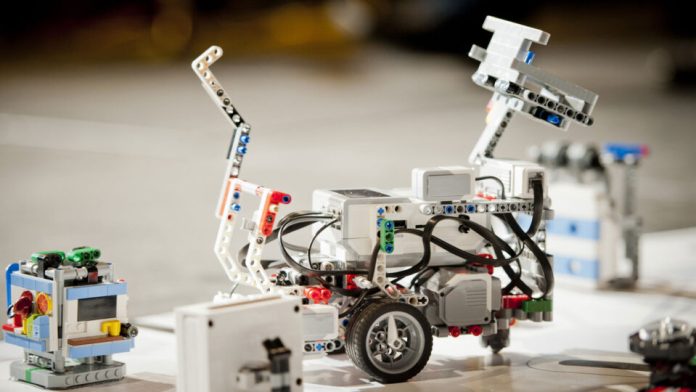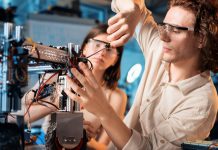Over the past few decades, automation has advanced quickly, and one industry where it has demonstrated great promise is healthcare. Healthcare robotics is the application of robots in medical settings to help staff members provide improved patient care. The healthcare sector has been utilising robots to better healthcare outcomes and increase the efficiency of healthcare processes, from surgical robots to telepresence robots. We will talk about the advantages, uses, difficulties, and restrictions of healthcare robotics in this article as well as the future of this cutting-edge technology.
Benefits of Healthcare Robotics: Healthcare robotics can enhance patient treatment and outcomes, which is one of its main advantages. For instance, surgical machines can carry out minimally invasive procedures with more finesse, dexterity, and accuracy, leading to quicker healing periods and fewer complications. By giving patients individualised therapy and exercise, rehabilitation robots can hasten the healing process after accidents or operations and enhance useful outcomes. Robots can also lower the possibility of human error and increase the safety of medical operations, improving patient care overall.
Healthcare robotics can improve operational productivity, which is another advantage. Robots in pharmacies, for instance, can automate the dispensing of medications, lowering errors and allowing employees to concentrate on more difficult tasks. Healthcare professionals can watch patients remotely thanks to telepresence robots, saving time and resources by eliminating the need for in-person visits. Overall, robotics can improve healthcare operations’ speed and accuracy, leading to better patient care and lower expenses.
Applications of Healthcare Robotics: Surgical robotics, rehabilitation robotics, telepresence robots, assistive robots, and pharmaceutical robots are just a few of the many uses for healthcare robotics in the industry. Surgical robots, like the da Vinci Surgical System, can carry out intricate procedures with greater accuracy and precision, causing less trauma to the patient and speeding up recuperation. Exoskeletons, a type of rehabilitation robot, can help people recuperate from injuries or operations by giving them specialised therapy and exercise, which can enhance functional outcomes. Healthcare professionals can interact with and monitor patients remotely thanks to telepresence robots like the RP-VITA, which eliminates the need for in-person visits. Assistive robots, such as the Paro seal robot, can provide companionship and emotional support to elderly patients, improving their quality of life. Finally, pharmacy robots, such as the ScriptPro SP 200, can automate the process of dispensing medication, reducing errors and freeing up pharmacy staff to focus on more complex tasks.
Surgical robotics:
One of the most well-known and frequently used uses of healthcare robotics is in surgery. Surgical robots are robotic systems created to help surgeons carry out difficult surgical operations with more accuracy and precision, causing less trauma to the patient and speeding up recovery. A control panel, one or more robotic arms, and a variety of specialised surgical tools are the usual components of these robots.
The da Vinci Surgical System, used in more than six million operations globally, is one of the most well-known surgical robotic systems. The da Vinci system consists of a surgeon console, a cart with four robotic arms at the patient’s side, and a 3D vision system with high resolution. The device is controlled by the surgeon by means of handheld controllers, which relay his or her motions to the robotic arms. The surgical process is then carried out by the robotic arms with a higher degree of accuracy and precision than would be possible using conventional surgical methods.
The advantages of surgical automation over conventional surgical methods are numerous. Greater accuracy and precision are among the main advantages. Surgical robots can carry out complex procedures with greater accuracy and precision than would be feasible with conventional surgical techniques because they are intended to be highly dexterous and precise. As a consequence, the patient may experience less trauma and recover more quickly.
The enhancement of vision is a further advantage of surgical robotics. A high-definition 3D camera system is usually built into surgical robots to give surgeons a clear, in-depth view of the surgical site. This can improve surgical outcomes and lower the risk of complications by enabling surgeons to see the surgical site in greater detail than would be possible with conventional surgical methods.
Robotic surgery can also lower the possibility of human mistake. Surgical robots can lower the risk of human error during operations because they are programmed to carry out specific tasks with a high degree of precision. The danger of complications can be decreased while also enhancing patient safety.
Despite the possible advantages, there are a number of difficulties and restrictions with surgical robotics. The high cost of acquisition and upkeep is one of the major issues. The cost of purchasing and maintaining surgical robots can restrict their use in some healthcare environments. Additionally, some medical professionals might oppose the use of surgical robotics technology because they worry about their employment security or feel that their professional liberty is in danger.
The learning curve needed to use the device is another drawback of surgical robotics. Surgeons and other healthcare professionals may need extensive training and experience to operate surgical robots successfully because they are highly specialised systems. This may restrict the use of surgical robotics in some healthcare facilities, especially those with restricted funding.
Challenges and Limitations: Healthcare automation may have some advantages, but there are also some problems and restrictions with this technology. The high cost of acquisition and upkeep is one of the major obstacles. The expense of many healthcare robotics systems is high, as can be the cost of maintenance. Additionally, some healthcare professionals might be reluctant to embrace robotics technology because they worry about their employment security or feel that their autonomy as professionals is in danger.
The restricted functionality and flexibility of some systems is another drawback of medical robotics. Many robots are made for particular purposes, so they might not be able to adjust to changing circumstances or environments. The use of robotics in healthcare may also raise legal and moral concerns, such as liability in the event of robot failure or the use of robots in end-of-life care.
Future of Healthcare Robotics: The future of healthcare automation appears promising despite the difficulties and constraints. Robots are becoming smarter and more adaptable thanks to developments in artificial intelligence and machine learning, while their usefulness and flexibility are being enhanced by the creation of more advanced sensors and actuators. In order to build more complete and effective healthcare systems, robotics technology is also being combined with other healthcare technologies like electronic health records and medical imaging systems.
Conclusion: In conclusion, healthcare robotics has tremendous potential to improve patient care and outcomes, enhance the efficiency of healthcare operations, and reduce healthcare costs






